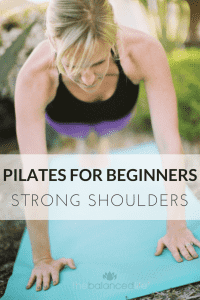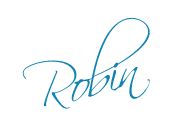
Blog
Pilates For Beginners – Strong Shoulders
Hi Beauties!
I just got back from a Fitfluence event at the YouTube Space in LA. It was so much fun, I can’t wait to tell you more about it. Stay tuned for a recap sometime next week. 🙂
Today’s post is dedicated to the final video in the Pilates For Beginners series and it’s all about the shoulders.
Interesting facts about the “shoulder complex”:
- 10 different muscles contribute to normal movement and function.
- the ability to move your arm is often more related to your shoulder blade than the shoulder joint itself.
- the shoulder joint is the least stable joint in the body
- the shoulder blade is connected to the rib cage by 16 different muscles.
What is the shoulder?
Most of us think of the shoulder joint (glenohumeral joint) when we refer to the shoulder as a whole. But in actuality, the shoulder is a complex system.
The joint where the arm bone meets the collar bone is a “ball and groove” joint. Which means the arm bone rests on a shallow groove of the collar bone and relies on muscle to hold it properly in place (which why shoulder injuries are so common).
A key component that is often left out of the conversation is the shoulder blade, also known as the scapula.
The shoulder blades and collar bone make up the shoulder girdle.
How often do you think about your shoulder blades when you’re working out?
I find with many of my introductory level clients there is very little awareness of the movement and function of the shoulder blade. So my hope is to change that through simple exercises that will get you familiar with how your shoulder blades move and how it feels when they are stabilized and strong.
Cues to be careful with:
“Slide your shoulders down.”
While this cue can certainly be helpful at times, it’s important that you don’t overdo it. Pulling your shoulders down with force can cause impingement of the joint. So I think it’s better to think of the shoulder blades relaxed and heavy on the back.
“Shoulders back.”
Often pulling your shoulders back and together causes an unnecessary arch in the spine along with a loss of connection in the abdominals on the front side of the body. I prefer to have clients think of a wide collar bone and broad shoulders while keeping their rib cage balanced on the spine.

Shoulder blade movement:
The scapulae are connected to the back of the rib cage and can move in 6 directions as shown in the image above.
In today’s video we’ll go through a few exercises to feel these movements on the back and spend time strengthening in the shoulder through stabilization challenges.
Once you’ve completed this workout you will have successfully completed the Pilates For Beginners series!
Which means it would be a perfect time to jump into Pilates 4×4. We kick things off this Monday! 🙂
Enjoy your workout…
Do you have additional questions or video requests? Please let me know in the comments. I love hearing from you!
xo,
PS– You can sign up for the FREE 5-part Pilates For Beginners program here!
Sources: Hyashida and Associates
share this post
Helping You Break Free!
Get your weekly delivery of inspiration—Pilates, nourishment,
& mindfulness—changing your relationship with food and your body.








3 thoughts on “Pilates For Beginners – Strong Shoulders”
Just finished all 5 beginner workouts in a row to prep for the 4×4. They were great! (Always good to go back to basics!) What I noticed is that my movements are often limited not by the flexibility in my spine, but by tightness all the way down the backs of my legs. Would love a video on increasing flexibility in the legs in order to support all the Pilates movements.
That’s a great idea, thank you Tracy! I will definitely keep that in mind and share something soon. 🙂 It’s great that by going back to the basics you were able to get more in touch with your body and pinpoint what it is exactly you are working with. Can’t wait for Monday!
xoxo
Robin
I second a series on increasing flexibility! I struggle with that too.